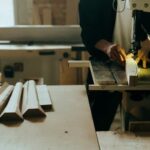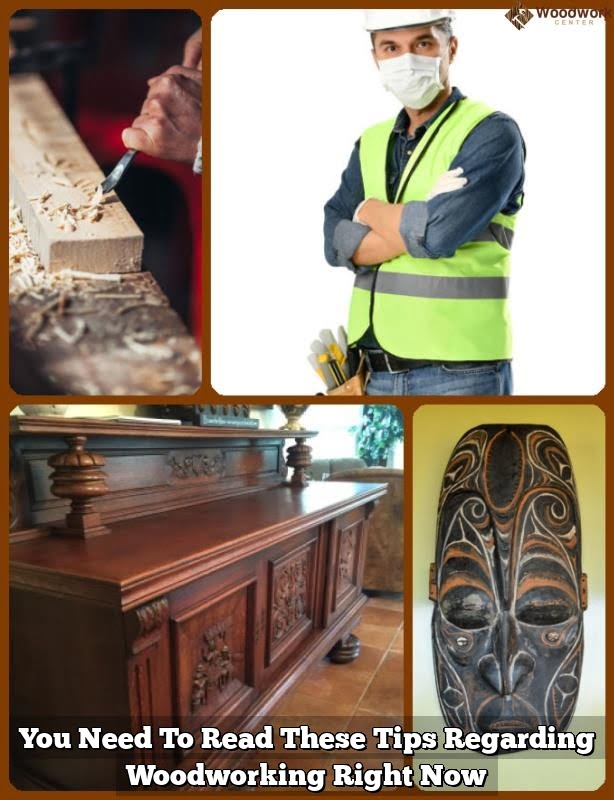Woodworking is the art of creating beautiful and functional pieces using wood, but it also comes with its share of challenges. One common issue that woodworkers often encounter is the occurrence of checks in their projects. In this article, we will delve into the world of woodworking to understand what exactly a check is and how it impacts woodworking projects.
A check in woodworking refers to a crack or split that appears on the surface of the wood. It can be caused by various factors such as changes in moisture content, internal stresses within the wood, or improper drying techniques. Understanding the causes of checks is crucial in preventing and repairing them effectively.
In this comprehensive guide, we will explore the different types of checks that can occur in woodworking, examine their impact on finished projects, and discuss techniques for both preventing and repairing these issues. By gaining a deeper understanding of checks in woodworking, you can improve the quality and longevity of your creations.
What Is a Check? Explaining the Definition and Causes
A check in woodworking refers to a crack or split that occurs along the grain of the wood. This natural process happens as the wood dries out and contracts, causing the fibers to separate. Checks can be caused by various factors such as improper drying, exposure to extreme temperature changes, or using green wood. It’s important for woodworkers to understand what causes checks in order to prevent them and ensure the quality of their projects.
There are different types of checks that can occur in woodworking. Surface checks are shallow cracks typically found on the surface of the wood, while end checks occur at the ends of lumber. Radial checks run along the radius of a log and are commonly found in round wooden objects like bowls or logs. Understanding these variations can help woodworkers identify and address checks in their projects.
The presence of checks can have a significant impact on woodworking projects. Not only do they affect the aesthetics of the finished piece, but they can also compromise its structural integrity. Additionally, checks may continue to grow over time if left untreated, leading to more serious issues in the future. Therefore, it is vital for woodworkers to be proactive in preventing and addressing checks during their projects.
| Types of Checks | Description |
|---|---|
| Surface Checks | Shallow cracks found on the surface of the wood |
| End Checks | Cracks occurring at the ends of lumber |
| Radial Checks | Cracks running along the radius of a log |
Types of Checks
In woodworking, a check refers to a split or crack that develops in wood, usually as a result of the drying process. Checks can occur in both seasoned and unseasoned wood and can have various causes. Understanding the different types of checks is essential for woodworkers, as it can help them identify, prevent, and repair these issues effectively.
One common type of check is the radial check, which runs from the center of the log to its outer edges. Radial checks are often caused by uneven drying or changes in temperature and humidity. Another type is the tangential check, which occurs parallel to the annual growth rings of the wood. Tangential checks are common in flat-grain lumber and are also caused by uneven drying.
Understanding these variations is crucial for woodworkers as it allows them to select appropriate wood materials for their projects and take preventive measures during the drying process. By recognizing the types of checks and their causes, woodworkers can minimize their impact on their projects and ensure the structural integrity of their workpieces.
| Type of Check | Cause |
|---|---|
| Radial Check | Uneven drying or changes in temperature and humidity |
| Tangential Check | Uneven drying, commonly found in flat-grain lumber |
The Impact of Checks on Woodworking Projects
Checks in woodworking can have a significant impact on the outcome of your projects. Whether you are a seasoned woodworker or just starting out, understanding the effects of checks is crucial to the success of your endeavors. Here are some ways in which checks can impact woodworking projects:
1. Compromised Structural Integrity: Checks can weaken the structural integrity of wood, making it more susceptible to breakage and other damage. This can be particularly problematic if you are creating furniture or other items that need to support weight or withstand regular use.
2. Aesthetic Imperfections: In addition to compromising the strength of the wood, checks can also detract from the overall appearance of your project. They can create unsightly cracks and splits that diminish the visual appeal of the finished piece.
3. Wastage of Materials: When working with wood that has checks, there is often a higher risk of material wastage. You may need to discard pieces that have extensive checking, leading to increased costs and inefficiency in your woodworking process.
To mitigate these impacts, it is essential to take measures to prevent and repair checks as part of your woodworking practice. By doing so, you can ensure that your projects are not only structurally sound but also visually appealing.
By understanding these impacts and implementing preventive measures, you can minimize the negative effects of checks on your woodworking projects and ultimately achieve better results.
How to Prevent Checks in Woodworking
Checks in woodworking can be a significant annoyance and can result in wasted time and resources if not properly managed. Fortunately, there are several preventative measures that woodworkers can take to minimize the occurrence of checks in their projects. Below are some effective tips for preventing checks in woodworking:
- Choose the Right Type of Wood: Some types of wood are more prone to checking than others. It is essential to select the appropriate type of wood for your project, taking into account factors such as the wood’s natural resistance to moisture and its overall stability.
- Properly Seal the Ends of Boards: One common cause of checks is rapid moisture loss from the ends of boards. To prevent this, it is crucial to seal the ends of boards as soon as possible after they have been cut. This can be done using commercially available end-sealing products or even simply by applying a coat of paint or wax to the ends.
- Control the Drying Process: Properly controlling the drying process of wood is critical in preventing checks. This may involve allowing freshly cut wood to air dry slowly and evenly, or using a kiln-drying process if necessary.
By implementing these preventative measures, woodworkers can greatly reduce the likelihood of checks occurring in their projects. Taking proactive steps to prevent checks not only saves time and resources but also ensures that woodworking creations maintain their structural integrity over time.
Understanding what causes checks and how to prevent them is key in producing high-quality woodworking projects that will stand the test of time. By incorporating these preventative techniques into your woodworking processes, you can create beautiful and durable pieces that will be enjoyed for years to come.
Repairing Checks
Checks in woodworking can be frustrating and disruptive, but they are not necessarily the end of a project. With the right techniques and tips, it is possible to repair checks and salvage the wood for use in various projects. In this section, we will explore some effective methods for repairing checks in woodworking.
Fillers and Epoxy
One common method for repairing checks in woodworking is to use fillers or epoxy. These materials can be used to fill in the gaps created by checks, providing a smooth surface for finishing. When using fillers or epoxy, it’s important to choose a product that matches the color and grain of the wood as closely as possible to achieve a seamless repair.
Clamping and Gluing
Another technique for repairing checks involves clamping the damaged area and using wood glue to secure the split back together. This method works best for smaller checks and can help restore structural integrity to the wood. It’s important to apply even pressure when clamping and allow sufficient time for the glue to dry before removing the clamps.
Reinforcement With Dowels or Splines
For larger or more severe checks, reinforcement with dowels or splines may be necessary. This involves drilling holes along the length of the check and inserting either wooden dowels or splines into the holes to bridge the gap. This technique not only repairs the damage but also adds strength to the wood, preventing future checks from forming.
By understanding these techniques and tips for repairing checks in woodworking, it is possible to salvage damaged wood and continue with your projects. However, it’s important to note that prevention is always preferable to repair when it comes to dealing with checks in woodworking projects.
Common Misconceptions About Checks in Woodworking
Checks Are Signs of Poor Quality
One common misconception about checks in woodworking is that they indicate poor quality or inferior craftsmanship. In reality, checks can occur even with the highest quality wood and expert woodworking skills. They are a natural occurrence in wood due to its structure and the drying process, rather than a reflection of the woodworker’s abilities.
Checks Can’t Be Prevented
Another misconception is that checks cannot be prevented, and once they occur, there is nothing that can be done to repair them. While it is true that some types of checks may be difficult to prevent completely, there are several preventative measures that woodworkers can take to minimize their occurrence. Additionally, with proper techniques and timely interventions, checks can often be repaired effectively.
All Checks Have Negative Impacts
Some may believe that any type of check in wood will negatively impact the overall quality and longevity of a woodworking project. However, this is not always the case. Depending on the size, location, and type of check, its impact on the structural integrity and aesthetics of the wood can vary. It’s important for woodworkers to understand the different types of checks and their potential effects in order to make informed decisions about how to address them.
By dispelling these misconceptions about checks in woodworking, woodworkers can gain a better understanding of this natural occurrence and its implications for their projects. Understanding what causes checks, how they can be prevented, and the various ways to address them will ultimately lead to improved woodworking outcomes.
Conclusion
In conclusion, understanding what a check is in woodworking is crucial for anyone working with wood. A check refers to a split or crack that occurs on the surface of the wood, and it can have various causes such as changes in moisture content, tension within the wood, or even natural drying processes. Knowing the different types of checks and their impact on woodworking projects is essential for preventing and addressing them effectively.
Prevention is key when it comes to checks in woodworking. By following proper drying and storage techniques, using sealants or finishes, and choosing the right type of wood for specific projects, woodworkers can minimize the risk of checks occurring. Additionally, being able to recognize and repair checks using appropriate techniques and tips can also save time and resources in the long run.
Overall, understanding what a check is in woodworking allows individuals to approach their projects with greater knowledge and skill. It enables them to anticipate potential issues, take preventive measures, and address any problems that may arise effectively. By emphasizing the importance of understanding checks in woodworking projects, woodworkers can create high-quality pieces that are more durable and visually appealing.
Frequently Asked Questions
What Is a Check in a Piece of Wood?
A check in a piece of wood is a type of split or crack that occurs along the grain. It usually starts at the surface and may extend inward, but it doesn’t necessarily go all the way through the wood.
What Is a Check on a Wood Board?
A check on a wood board refers to the same type of split or crack that occurs in a piece of wood, particularly in lumber or boards used in woodworking. Checks can affect the appearance and structural integrity of the board.
What Is the Difference Between a Crack and a Check?
The main difference between a crack and a check is that cracks typically go all the way through the wood, while checks are more localized splits along the grain that may not extend completely through the material. Both can be caused by drying or shrinkage of the wood.

Hi everyone! I’m a woodworker and blogger, and this is my woodworking blog. In my blog, I share tips and tricks for woodworkers of all skill levels, as well as project ideas that you can try yourself.




